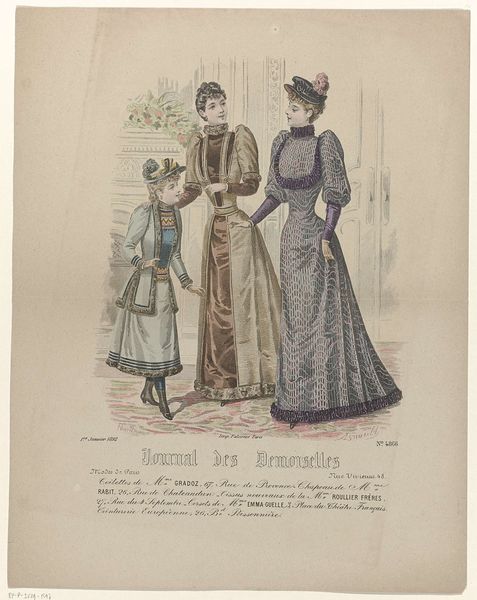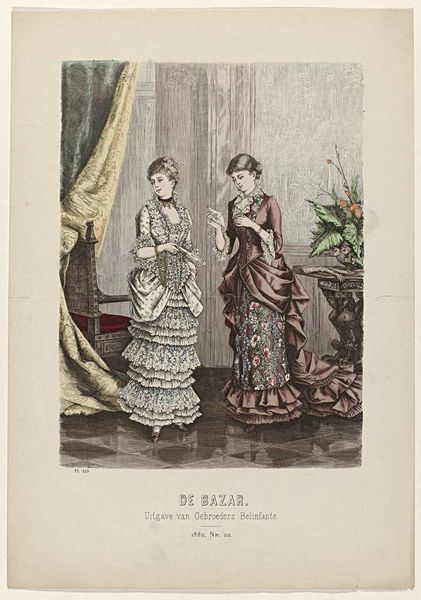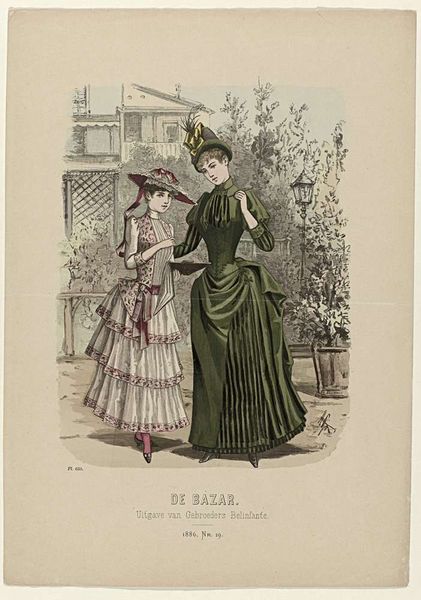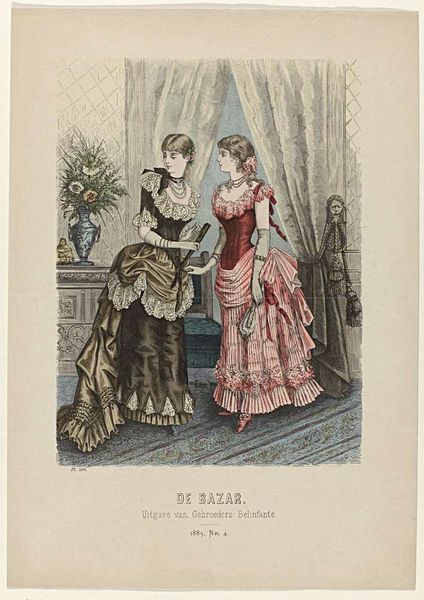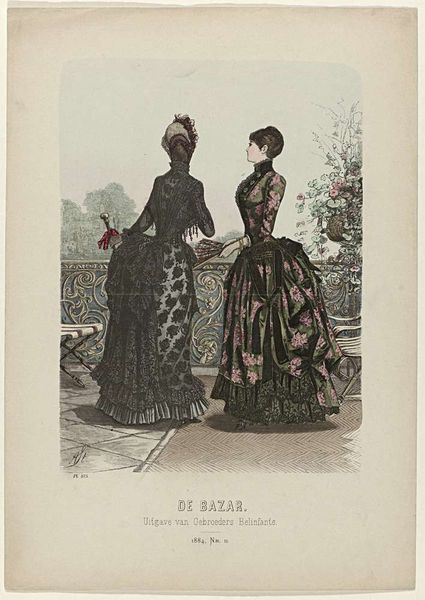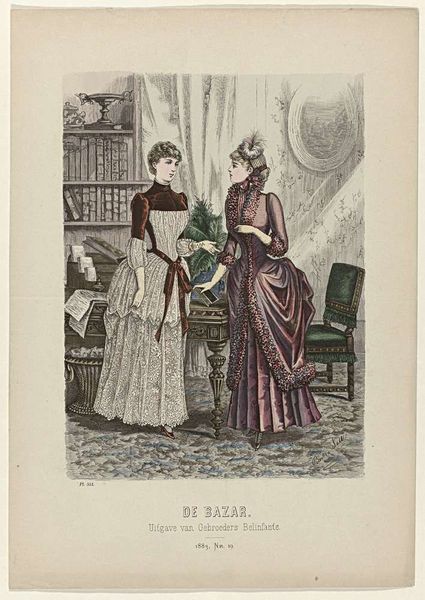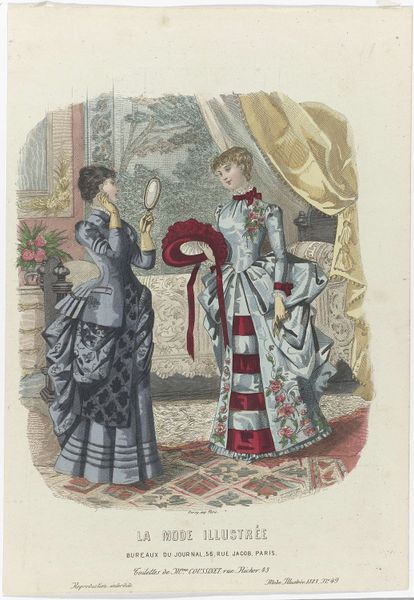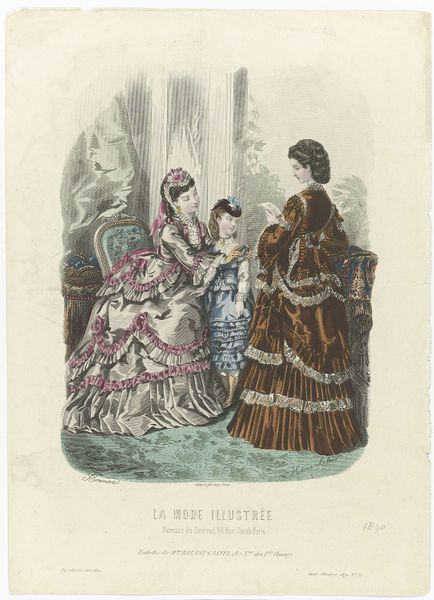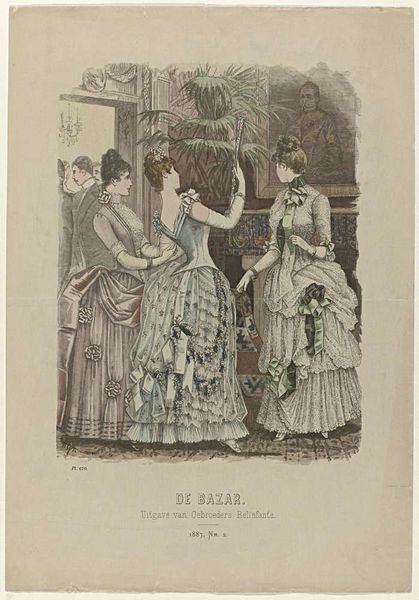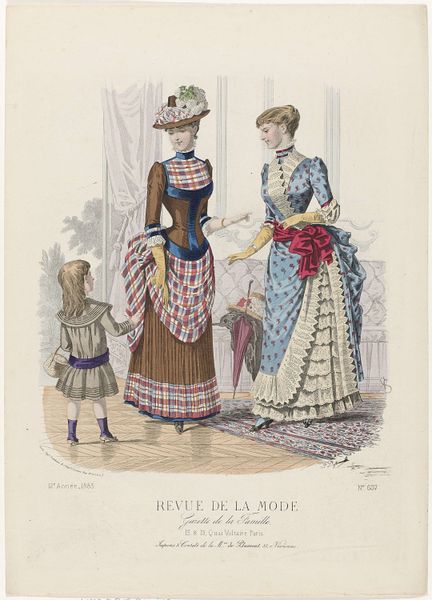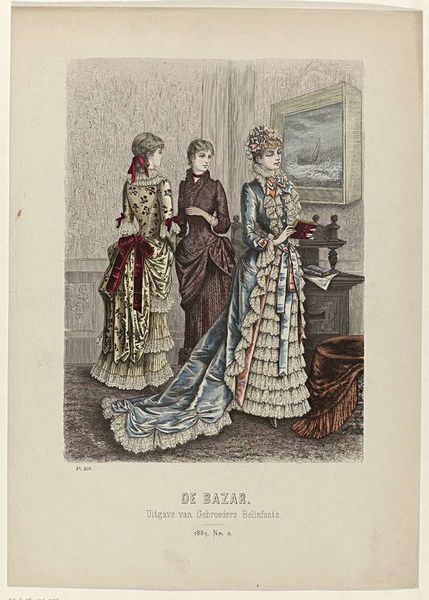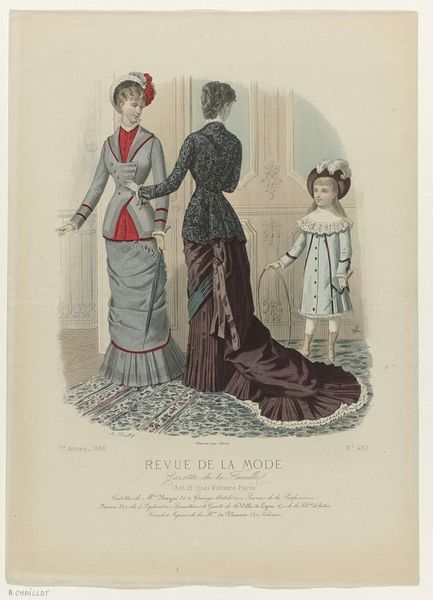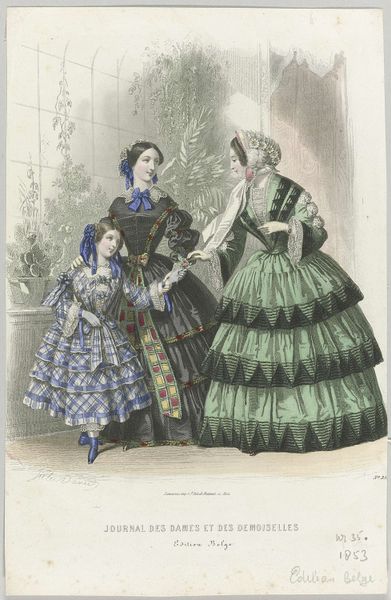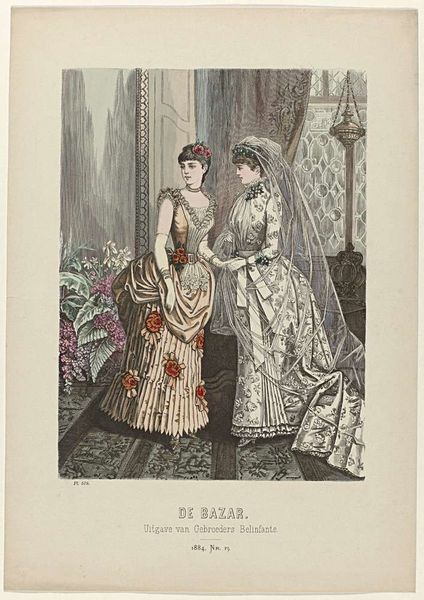
lithograph, print
lithograph
figuration
watercolour illustration
genre-painting
academic-art
dress
Dimensions: height 382 mm, width 270 mm
Copyright: Rijks Museum: Open Domain
Curator: Here we have "De Bazar, 1884, Nr. 23, Pl. 593", a lithograph from 1884 attributed to an anonymous artist. Editor: The immediate impression is one of studied elegance, with a curious flatness to the perspective, a sort of stage set for these figures. Curator: It's interesting you say that. Fashion plates like these circulated widely, shaping ideals of femininity and domesticity for the rising middle classes. Think about how access to images like this informed women's roles. Editor: Precisely. But the artistry itself begs analysis! The controlled line work, the way the patterns almost fight against the structure of the dresses, creates a fascinating tension. Curator: And notice the subtle class dynamics at play. The fashions are aspirational, certainly not representative of everyday life for most women. The child, positioned between these women, becomes a figure onto which these desires can be projected. Editor: Indeed. And the contrasting textures, from the floral background to the ornate detailing on the darker dress—there's a careful arrangement that highlights surface over substance, don't you think? Curator: Absolutely, the plate functioned as a tool of cultural influence and economic power. It encouraged consumerism and the reinforcement of gendered expectations. The presentation of an affluent, stylish world offered both escapism and benchmarks for social positioning. Editor: Yes, but taken in isolation, it possesses a rather austere compositional balance, quite divorced from whatever narrative meaning is intended, I would say. The way light catches on certain elements – the drapes behind the figure on the right, for instance – lends itself to formal appreciation regardless of whatever social subtext is intended by its creation. Curator: That's a fair point; however, for me, decoding the artwork within its cultural context, where such visual displays carry significant societal meaning, truly enhances its overall significance and effect. Editor: Regardless, I believe studying how various shapes and textures function autonomously can be a valuable starting point for more involved analysis, however historical informed. Curator: Perhaps, and on the other hand, the lack of an identified artist perhaps speaks to the anonymity of women within that period—their aspirations manufactured by market forces they have limited power over. Editor: Perhaps, perhaps. In either event, there’s a lot here to admire and dissect.
Comments
No comments
Be the first to comment and join the conversation on the ultimate creative platform.
